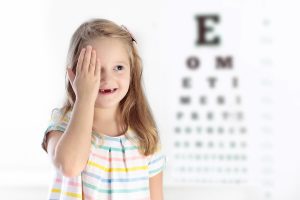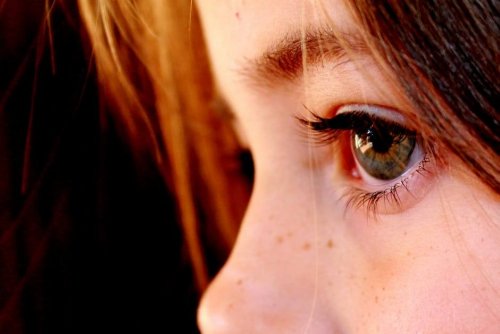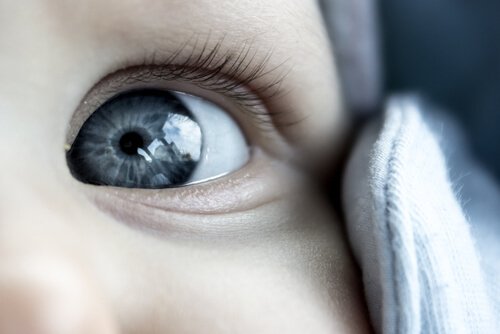Lazy Eye in Children: Causes, Symptoms and Treatment

Lazy eye in children is a vision disorder. Also called amblyopia, its main characteristic is that one eye works less than the other due to lack of visual stimulation.
Why does this happen? Generally, something happens that causes both eyes to send different imagines to the brain. To avoid confusion, the brain prefers one image and gets rid of the other.
In these cases, the brain picks a “favorite eye” to develop normal vision. The other eye, the one with the deleted image, loses vision partially or totally.
Other features
Lazy eye in children usually affects one eye. However, it can also affect both. In addition, it’s one of the most common causes of poor vision in childhood. It affects between 1% and 4% of children.
Remember, vision doesn’t come back 100% to the lazy eye after using glasses. This is why lazy eye is different from other vision disorders.
Causes of lazy eye in children
This pathology can be caused by three different eye problems:
- Strabismus. This is a problem that affects the muscles that help the eye focus on objects. These, by not working well with each other, make the eyes point in different directions.
- Anisometropia. This is where there’s a difference in clarity between the two eyes. If the gap is large, the brain chooses the sharpest image and eliminates the other. Within this group are myopia, hyperopia, and astigmatism.
- Cataract. This is called a turbidity in the crystalline lens. That’s the natural lens in the eye. It makes vision cloudy, as if looking through a foggy glass.

As you can see, in all three options, the brain chooses the eye that sees better as the “preferred” eye. Then, it leaves the other to the side. There, it’s unused and doesn’t see as well as a result.
This will eventually cause a delay in the visual development of the lazy eye. The more that someone uses vision, the more likely he’ll have better visual functioning. Therefore, the brain prevents the weak eye from developing properly.
Symptoms
Sometimes, the signs of lazy eye in children aren’t easy to notice. That’s why there are some signs you should pay extra attention to in your child:
- Gets close to paper when reading, writing or drawing
- Narrows or squints, as if trying to focus
- Rubs his eyes continuously
- Says it’s hard to see in the dark
- Diverts an eye
- Has headaches
- Has red or watery eyes
- Looks at the TV or blackboard sideways
- Comments that he “sees blurry”
- Has a whitish spot on his pupil
“The main characteristic of this condition is that one eye works less than the other for lack of visual stimulation.”
Why is it important to treat lazy eye in children?
It’s important to diagnose and treat this condition in small children for the following reasons:
- So that the lazy eye doesn’t develop a serious chronic defect.
- It’s important for kids to see in three dimensions. They need to be able to perceive depth. Therefore, they need good vision in both eyes.
- You need to notice this at an early age, preferably before age 5. This way, your child can develop his vision properly. Remember, before that age, the visual cortex is better adapted to the stimuli of the environment.
- The smaller the child, the quicker his vision can be fixed. As in many other conditions, diagnosing it early on will make the recovery process quick and easy.

Treatment for lazy eyes
It’s relatively quick and easy to recover the potential of lazy eyes. Doctors usually use a method called optical penalty. The goal is to get the good eye to work a little less. That way, the weak eye works a little harder and can see better.
The most common way to achieve the desired effect is to use a patch to cover the good eye. Then, the bad eye has to exercise for several hours a day. To achieve the same thing, your doctor might recommend dilating drops and glasses.
This text is provided for informational purposes only and does not replace consultation with a professional. If in doubt, consult your specialist.








